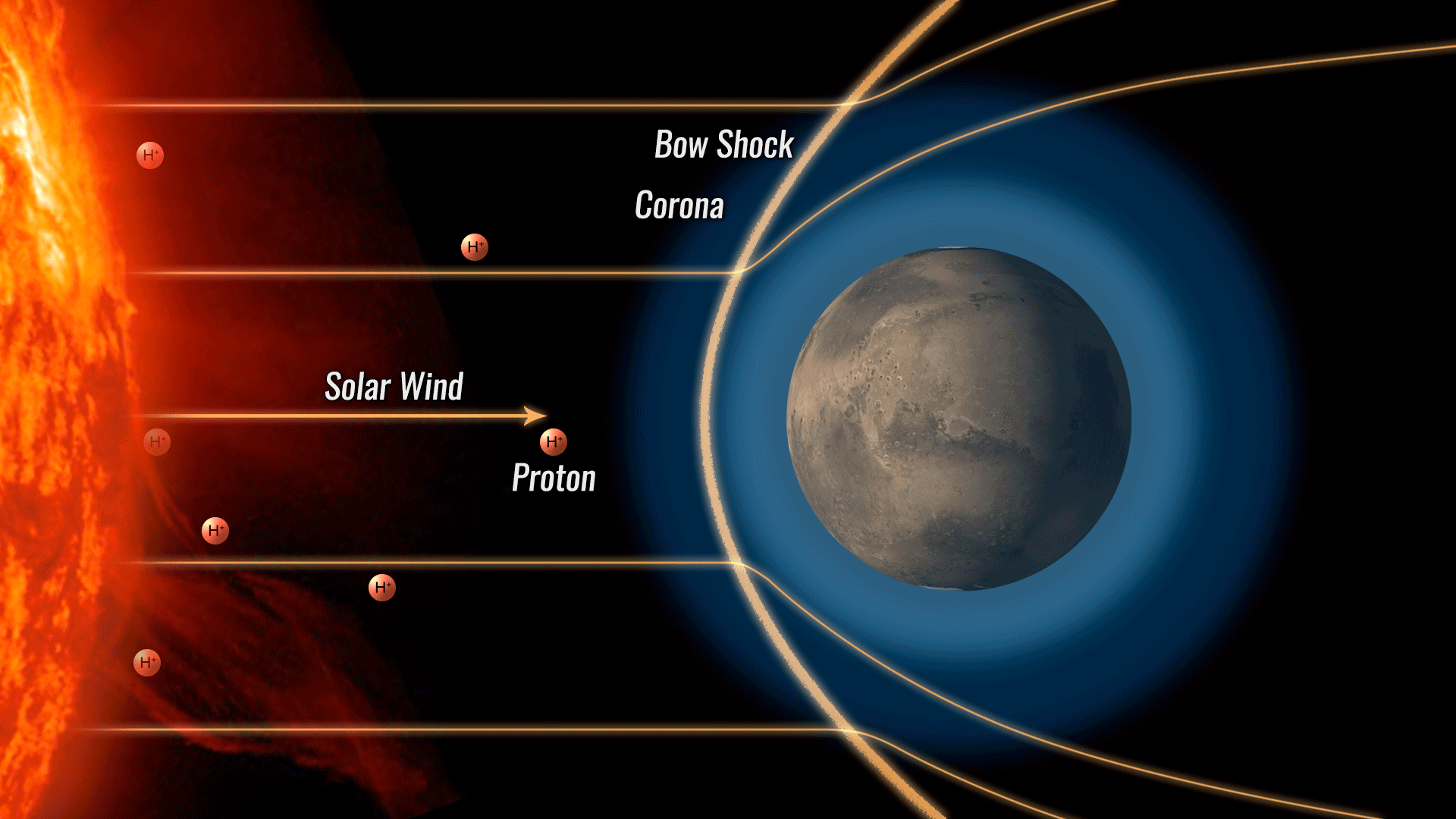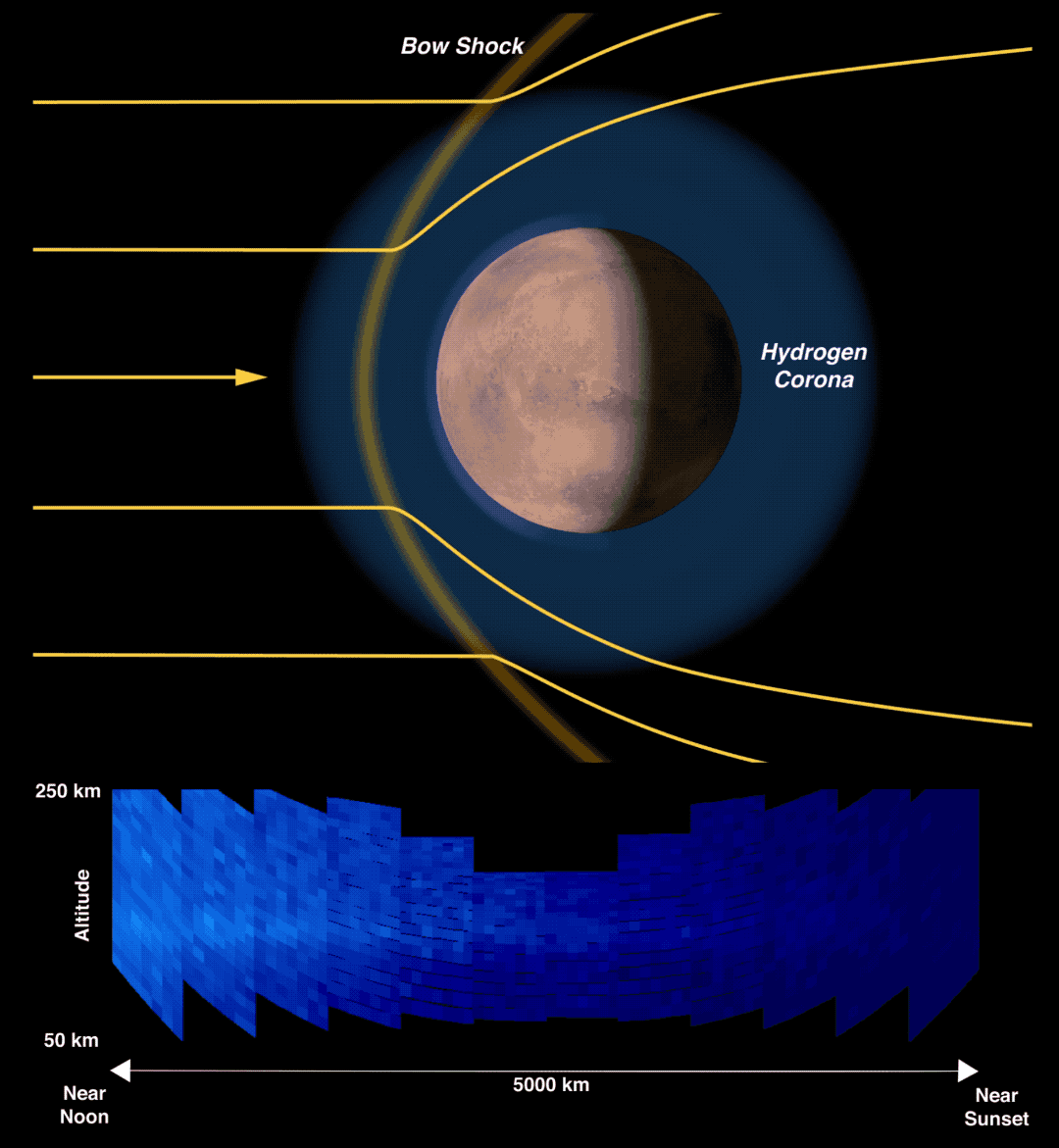'Stolen' Electrons Spark Unusual Auroras on Mars
A new type of aurora has been spotted on Mars, and thieving streams of solar wind may be to blame, a new study shows.
Unlike auroras on Earth, which are caused by electrons and are generally seen near the poles, the auroras on Mars are triggered by an influx of protons and occur over much of the dayside of the Red Planet, where auroras are very hard to see.
Using the Imaging Ultraviolet Spectrograph on NASA's Mars Atmosphere and Volatile Evolution (MAVEN) orbiter, astronomers observed that, on occasion, the ultraviolet light coming from hydrogen gas in Mars' upper atmosphere would mysteriously brighten for a few hours. These brightening events happened at the same time that the orbiter's Solar Wind Ion Analyzer (SWIA) instrument measured an increase in solar-wind protons (charged particles released from the sun), according to the study. [Gorgeous Auroras Could Light Up Entire Martian Sky]
Generally, Mars' "bow shock" — a magnetic obstacle surrounding the planet — would divert charged particles from the solar wind. However, the researchers found that, in this case, the charged particles "steal" electrons in order to sneak into the planet's upper atmosphere.
"As they approach Mars, the protons coming in with the solar wind transform into neutral atoms by stealing electrons from the outer edge of the huge cloud of hydrogen surrounding the planet," Justin Deighan, a researcher at the Laboratory for Atmospheric and Space Physics at the University of Colorado Boulder and lead author of the new study, said in a statement from NASA Monday (July 23). "The bow shock can only divert charged particles, so these neutral atoms continue right on through."
These unusual proton auroras occur far more frequently on Mars than they do on Earth, largely because of Earth's strong magnetic field. Therefore, proton auroras may also occur on other worlds that lack their own magnetic fields, such as Venus or Saturn's moon Titan, NASA officials said in the statement. These two bodies also have an abundance of hydrogen in their upper atmosphere, meaning there are plenty of electrons available to neutralize charged particles from incoming solar wind.
"The Martian proton auroras are more than a light show," SWIA principal investigator Jasper Halekas, an associate professor in the Department of Physics and Astronomy at the University of Iowa, said in the statement. "They reveal that the solar wind is not completely diverted around Mars, by showing how solar wind protons can sneak past the bow shock and impact the atmosphere, depositing energy and even enhancing the hydrogen content there."
Breaking space news, the latest updates on rocket launches, skywatching events and more!
Their findings were published July 23 in the journal Nature Astronomy.
Follow Samantha Mathewson @Sam_Ashley13. Follow us @Spacedotcom, Facebook and Google+. Original article on Space.com.

Samantha Mathewson joined Space.com as an intern in the summer of 2016. She received a B.A. in Journalism and Environmental Science at the University of New Haven, in Connecticut. Previously, her work has been published in Nature World News. When not writing or reading about science, Samantha enjoys traveling to new places and taking photos! You can follow her on Twitter @Sam_Ashley13.


